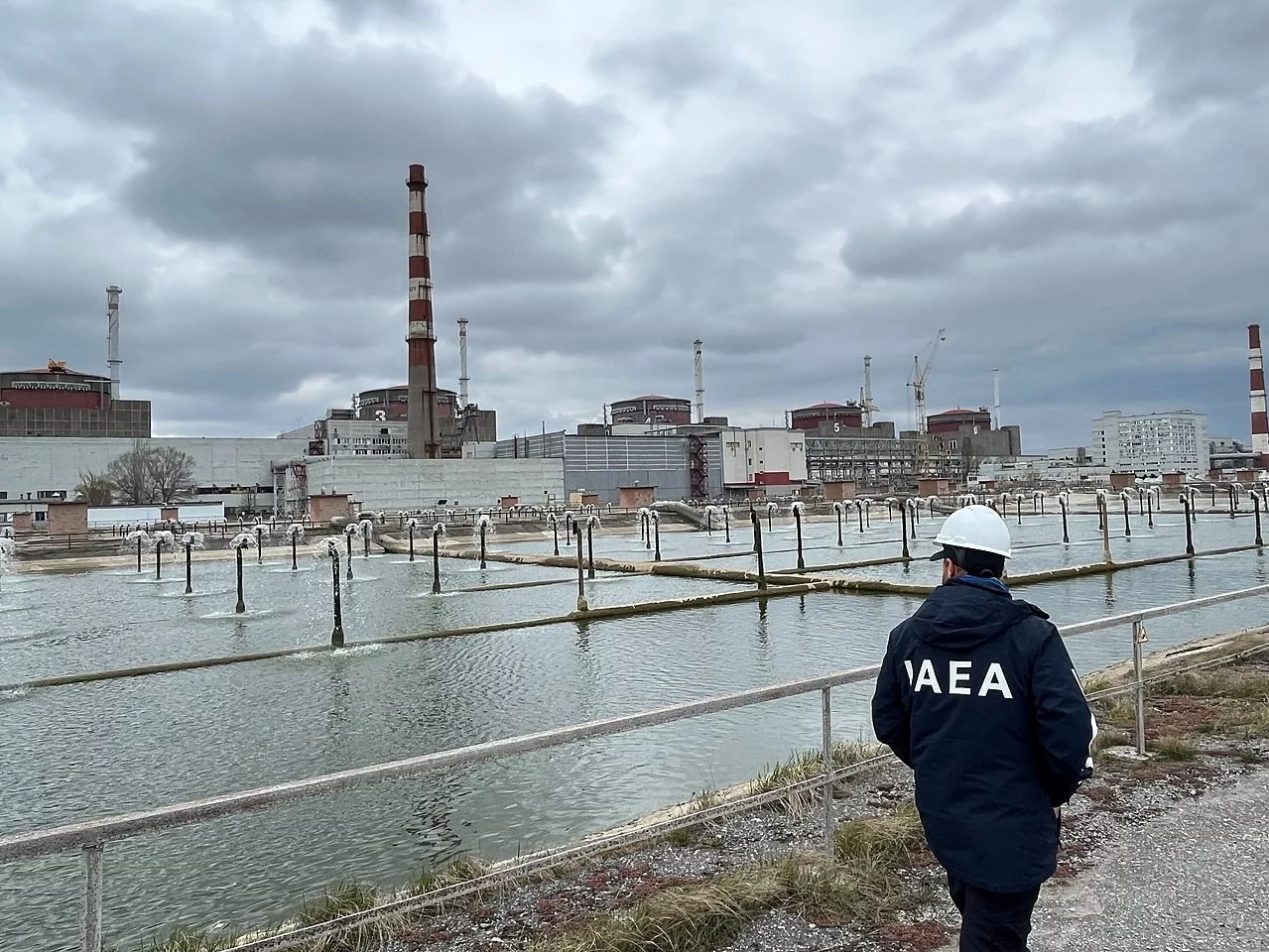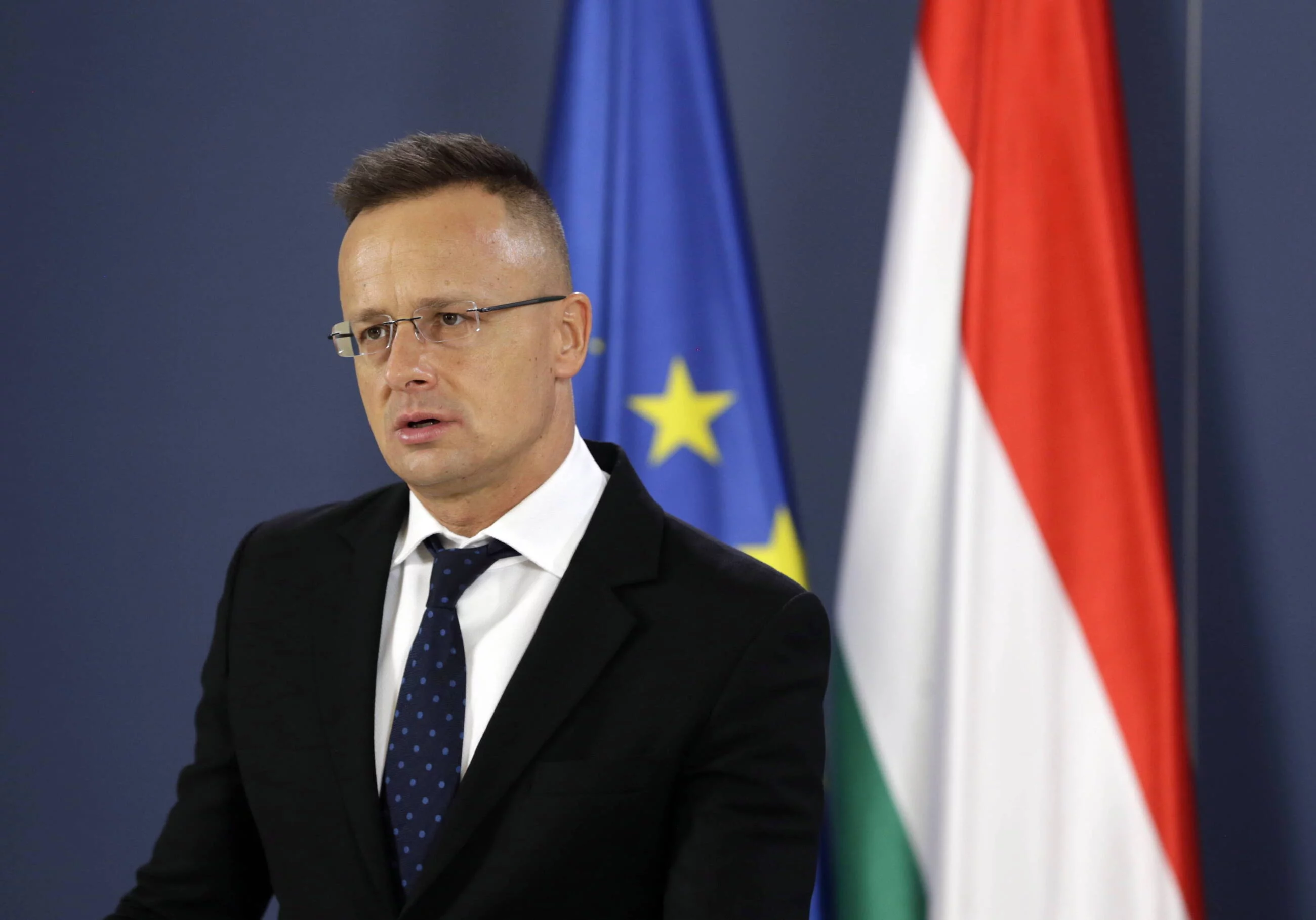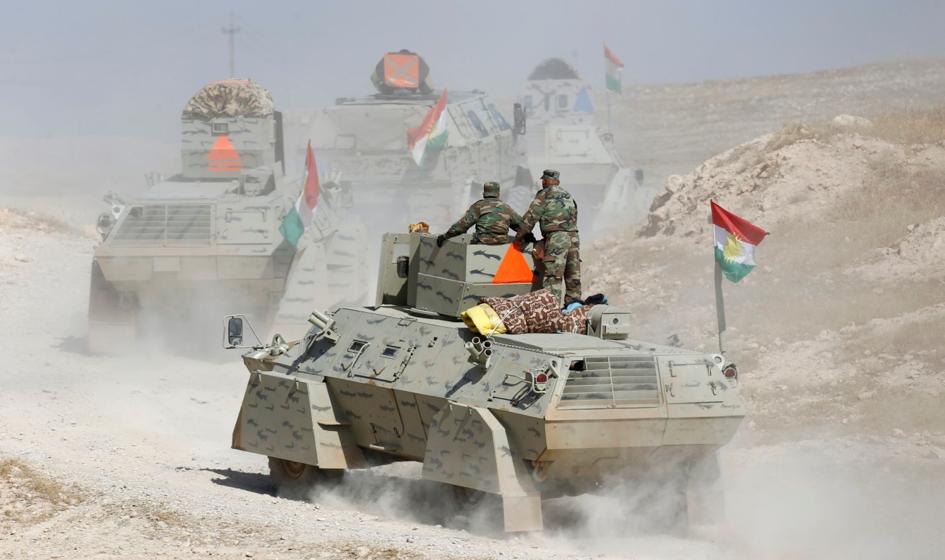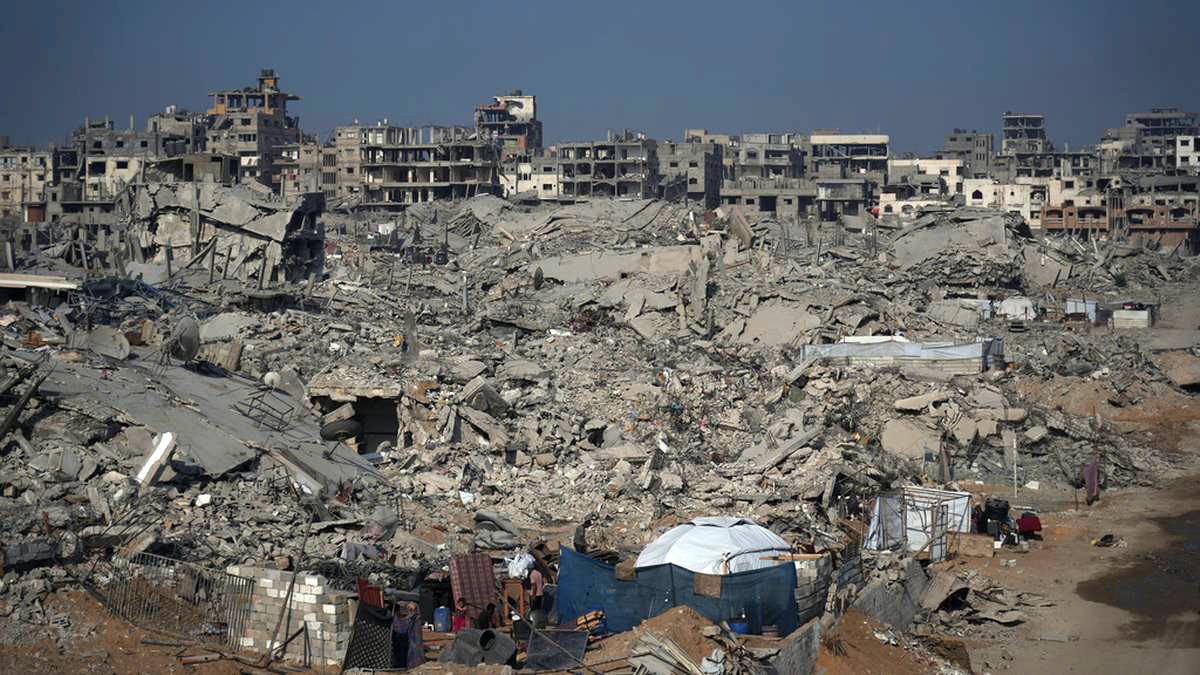He's playing for the drone. Production and usage of Ukrainian unmanned combat aircraft

The Russian-Ukrainian War is characterised by the usage of unmanned aircraft on an unprecedented scale. The effectiveness of drones on the battlefield decided to mass-use them by the Armed Forces of Ukraine (SHU), which became possible thanks to cheaper and easy production. The improvement of unmanned Kiev systems is seen as a possible method of eliminating the enemy's advantage in the field of classical means of destruction, above all all artillery weapons. The continued Russian dominance in this area causes the number of drones on the front line and their importance to defenders to grow. This trend will be reinforced by the military leadership and political chance to address the army's shortages.
Full-scale aggression has caused booms in Ukraine in the field of the production of unmanned systems and has raised this sector to the function of 1 of the most forward-looking segments of the economy with advanced export possible in the future. At the same time, achieving a lasting qualitative and quantitative advantage in utilizing these machines on the front will have a crucial impact on the continuation of the conflict.
Mass usage of drones in Ukrainian armed forces
Unmanned aircraft have been utilized in military activities in Ukraine since 2014. Initially, they were utilized to identify, observe and correct artillery fire. In 2015, they began to be utilized to carry and drop explosives. With the start of the full-scale Kiev war, he set the improvement of these systems as an effective asymmetric consequence to the aggressor's advantage in armored weapons and aviation. In time drones became the primary means of firing on the front for SHU[1], frequently replacing deficit artillery missiles and air defence systems.
As a result, the expanding usage of unmanned workers has almost entirely dominated the battlefield. The drones performed various tasks: from reconnaissance activities to providing precise data on the location of the opponent, through the transportation of ammunition, equipment and supplies to fighting soldiers, to the usage as a weapon in direct combat and the demolition of distant objects. They are now liable for destroying almost 85% of enemy military targets on the front[2] and 70–80% failure among his soldiers (death and injured victims)[3]. The mass usage of unmanned vehicles besides forced the parties of the conflict to retreat by respective kilometres from the line of clash of dense weapons, i.e. tanks or artillery systems. This became possible through the extremist shortening of the chain of command by utilizing these machines by troops operating straight in the combat zone.
The expanding scale of drone usage at the front and at sea and to attack targets in the depths of enemy territory has caused considerable changes in the structure of the Ukrainian military. At the beginning of 2023, the SHU brigade formed the world's first drone strike companies and independent drone troops – a full of more than 60 units ( regiments and separate divisions). Then came the organizational and doctrinal modernization of the army in its adaptation to fresh conditions on the battlefield. Consequently, in June 2024, a pioneering independent kind of drone troops – the Unmanned Systems Force (SSB) was established. In February 2025, a "Drone Line" task was established, formed from the 5 most effective drone assault troops with the "Madziar Bird Regiment" led by Robert Browdi[4], headed. The task of the “line” is to make and implement a fresh concept of the usage of these machines on various sections of the front by creating a alleged death region – a depth of 10-15 km of terrain where drones will completely destruct any activity of the opponent.
Unmanned and the home arms industry
As of 2015, the number of aircraft manufacturing companies in Ukraine has increased.[5]. Formally, this category besides includes classical aircraft and helicopters, but in practice the sharp increase in activity and production values in this section in fresh years (especially since 2022) is almost exclusively due to the improvement of the drone sector.
After the outbreak of the full-scale war, the number of fresh industrial enterprises jumped from 41 in 2022 to 132 years later and 183 in 2024, and only in the first 4 months of 2025 had already registered 107 fresh entities. Prior to the invasion, PIK Deviro, Screentech, Techawtofart Piwden and Ukrspecies formed the largest companies producing unmanned aircraft. Among the most crucial producers created later, it is worth mentioning Flash Tech, Smart Machinery Solutions, Robotics Distribution and UMO Ukraine.
Figure 1. Number of air companies registered in Ukraine from 2010 to 2025

* Oh, yeah * By April 25th.
Source: YouControl.
It is estimated that 1 brigade uses respective 100 FPV drones per month, while the needs are estimated at about 2.5 thousand. In 2024, about 2.2 million different types of unmanned aircraft were created in Ukraine, and in 2025 this number is expected to scope over 4.5 million (more than 2 million of them are intended to be FPV drones), and this is due to the usage of state funds to acquisition home machines of this kind of evidence sum of 775 billion hryvnia (about $18.5 billion) and to increase this amount by another 216 billion hryvnia (about $5 billion) as part of the amendment of the budget law implemented in late July 2025.
The improvement of the Ukrainian unmanned sector is reflected in the fast improvement of its financial performance. In the first year of invasion, due to intensive first investments, the request for fast reorganization of wartime production and deficiency of experience in mass production of drones, the manufacture suffered immense net losses, exceeding 2 billion hryvnia. As early as 2023, there was a return – the full net profit of this manufacture was over 4.6 billion hryvnia at revenues exceeding 44 billion. This was due to the fast scaling of production, the improvement of local engineering competences, active state support through grant programmes and public procurement of the Ministry of Defence and partnerships with volunteer organisations. In 2024 growth dynamics proved even more impressive. Companies from the manufacture achieved evidence revenues, reaching 100 billion hryvnia, and net profit exceeded 13.8 billion.
Figure 2. Financial results of the Ukrainian Unmanned Production Sector from 2022 to 2024

Source: YouControl.
As a result, problems with the organization of unmanned systems structures in the first period of full-scale war resulted in a crucial under-financing of the completion of branches with these devices. This gap was filled with public collections for this purpose, which active volunteer communities. As a result, the number of private drone assembly initiatives, frequently operating in makeshift home workshops, has increased. specified distributed production brings benefits in terms of minimising the threat of demolition of the description due to Russian air strikes and the anticipation of delivering circumstantial copies to the needs of the unit. Weaknesses include the vast variety of device types and their folding and usage methods, as well as the heterogeneous method and quality standard. SSB drone troops presently have more than 250 different models of unmanned aircraft.
The problem of the powerful diversity of types and quality of drones was to be addressed by the regulations of December 2024 requiring suppliers, inter alia, to get certificates of compliance of these devices with certain method standards and expert opinions allowing their individual types for military use. Consequently, the procurement procedure has increased further and has been exposed to corruption related to the dependence of purchases on the holding of appropriate documentation.[6]. In particular, this has made it hard to supply the needed unmanned workers on the front line, where they are utilized in a large number of cases, and the fast replacement of machines frequently decides to win in resisting an enemy attack. In June 2025 the Ministry of Defence launched DOT-Chain Defence – a peculiar digital platform through which brigades fighting on key sections can straight submit orders for FPV drones of selected suppliers[7]. As a result, the procurement and supply of these weapons to military operators is expected to be considerably simplified and shortened.
Centralisation of unmanned production in Ukraine remains in the area of plans and announcements for the time being. It will affect the hazard of corruption, which is supported by the already-functioning opaque financing strategy for the acquisition of these equipment. The process of acquiring them, as in the case of another military weapons and equipment, is mostly classified during the period of martial law.[8]. As a result, there is fraud, as shown by scandals in which high-ranking officials and persons from the immediate surroundings of president Volodymyr Zelenski are to participate.[9]. An additional problem is the complexity and chronicity of bureaucratic procurement procedures, resulting in delays in contracting and supplying drones to branches and certification of fresh models and listing of their producers on the list of suppliers to the military.
Ukrainian-Russian Technology Competition
The request for mass production of drones is primarily the consequence of their massive usage on the front. Although the accuracy of Ukrainian unmanned workers increased from 30% in 2022 to 70% 2 years later[10], it is estimated that as many as 60-80% of attacks utilizing FPV devices do not lead to demolition of the target, among others due to the armor utilized by the enemy[11] and the anticipation of jamming machines by means of radio-electronic combat (WRE). The Russians have deployed thousands of systems of this kind on the front line capable of simultaneously operating on respective radio frequencies utilized to communicate the operator with the drone[12]. According to estimates in 2024, as many as 75% of all unmanned workers utilized by both sides of the conflict were just disabled by jamming devices[13]. So Ukrainians and Russians began to look for a technological solution to this problem.
Ukrainian designers focused on developing an artificial intelligence-based operating system. Thanks to it, the device is able to track the mark itself and approach it on the basis of an automatic image recognition algorithm. This allows you to operate independently on the last fewer 100 meters from the target, making the aircraft insensitive to WRE measures. At the same time, work is underway to carry out attacks utilizing a swarm of drones that communicate with each another and make decisions without human interference.
However, the current analysis of the image and designation of the wanted objects is simply a complex task requiring the installation of high-quality components, a precisely developed information processing strategy and many months of tests. The barrier is primarily an insufficient standard of image transmitted from the camera, which prevents the correct recognition of the object and tracking it. In addition, the algorithm has not yet developed adequate to be able to direct the device to the right point of destination (e.g. the delicate location of the tank) to destruct it. For this reason, this technology needs further improvement before it can be utilized widely, but it is likely to have been utilized in part already during the spectacular Operation "Spider Web" – a drone attack on Russian strategical aviation aircraft on 31 May 2025.
In the invading army, mass usage was found by unmanned aircraft controlled by a fibre optic cable. The first models of this kind had already appeared in 2023 in Ukrainian armed forces, but this thought was abandoned for the improvement of systems equipped with artificial intelligence. Although fiber-optic drones are more expensive, require more battery, are little maneuverable and carry little explosives than their conventional counterparts, at the same time they are full resistant to WRE measures. Expanded from spool-mounted fiber-optic thread gives the operator an image of excellent quality almost without delays.
Insensitiveness to the failure of the radio horizon, i.e. the scope of waves (e.g. due to the terrain) and the option to freely penetrate the interior of buildings or shelters, provided an crucial advantage for specified machines. The operator can besides safely hide from the enemy underground or in a fortification facility. It is worth noting that the usage of fibre is simply a kind of regress – a return to solutions from the mid-20th century (it was used, among others, in the first russian anti-tank rocket led by 9M14 Tiny). The improvement of WRE systems has contributed to the renaissance of this technology, which has importantly reduced the efficiency of remote-guided means of destruction.
Aggressor introduced the first fibre optic drones into the battlefield in the summertime of 2024, and their mass usage since the beginning of 2025 proved to be 1 of the key advantages in displacing Ukrainians from the Kursk region. Elite units with these machines, i.e. Rubicon and Sudny Den (day of the court), were then distributed on delicate sections of the front, including under Pokrowski and Torećek. These sub-units made a major contribution to the advancement of the Russian army in the Donetsk Oblast and became a major challenge for the defence of the opponent.
Kiev is trying to catch up: in March 2025. The Ukrainians conducted successful tests of non-personnel utilizing fibre optics, and in April the first copies were sent to the army. In June, president Zelenski signed an amendment to the taxation code exempting cable exporters from customs duties, which is expected to importantly reduce the cost of manufacturing equipment. However, the problem remains the dependence of manufacture on Chinese fibre strands, with around 90% of those available on the marketplace coming from the PRC. Protectors trust on their operators to besides supply the another components needed for production.
China dependency
The Ukrainian drone manufacture is heavy based on foreign. National customs statistic did not make unmanned workers a separate commodity category until 2023. Data for 2023, 2024 and the first 2 quarters of 2025 show a dynamic increase in imports from both China and another countries, with the PRC remaining the dominant supplier.
Figure 3. Value of Ukrainian Unmanned Aircraft Imports in Period I 4th 2023 – 2 4th 2025

Source: Ukrainian State Customs Service.
Analysis of data for 2024 reveals a clear differentiation of equipment in terms of their weight class and origin. The largest dependence on Chinese contractors concerns the lightest drones, with a take-off weight of up to 7 kg – as many as 98% of machines in this category were created in the PRC. This is especially about multi-virtrators, equipped with permanently integrated video recording and recording equipment – nearly 600 1000 of them were imported from China. Unmanned drones are the ones most commonly utilized on the front as reconnaissance drones or light explosives. In the case of heavier ships, weighing between 7 and 25 kg, China's share falls to about 32%, and in the category of the most advanced machines – above 25 kg – is only 9.5%. Overall, the import structure shows that Ukraine is based on this country mainly in the low-cost, light equipment segment, which is easy to adapt and usage in war conditions.
Figure 4. Value of Ukrainian imports of major types of unmanned aircraft in 2024

Source: Ukrainian State Statistical Committee.
The PRC is besides delicate as a supplier of components for the construction of drones. Talking about structural materials (e.g. carbon fibres), drive elements (a variety of electrical motors), power systems (mainly lithium-ion batteries) and energy converters. Unmanned devices besides require advanced electronics: integrated circuits, resistors and control devices. Communication components, including antennas, distant control apparatus, radio navigational equipment, cameras or rangefinders, as well as propellers, electrical conductors and peculiar measuring and control equipment, are besides necessary.
Such a large dependence on China in the import of both ready-made machinery and parts for their production gives emergence to concerns that Beijing will introduce restrictions that will lead to the manufacture paralysing. However, the hazard of specified a decision appears to be low. Although president Zelenski stated at the end of May 2025 that the PRC had halted the supply of drones to Ukraine and the EU, these words are not supported by the Ukrainian Customs Service (see Figure 3) or Eurostat. National statistic number goods by country of origin, but in fact most of them are imported through 3rd countries, and in the context of unmanned workers Poland plays a very crucial function – in 2023 their exports to Ukraine amounted to EUR 139 million, increased to 482 million in 2024 and reached EUR 422 million in the first 7 months of 2025. This means that Beijing's possible introduction of restrictions only against Kiev would have limited effectiveness, and the embargo on besides many countries does not seem realistic.
The value of sold industrial production in the drone section is confirmed by the rapidly increasing home production. In 2022, this value was about 14.1 billion hryvnia, in the following year – over 23.6 billion, and in 2024 – 42.9 billion, which means a three-fold increase in 2 years.
Figure 5. Value of aircraft production sold (excluding VAT and excise duty)

Source: Ukrainian State Statistical Committee.
Perspectives
The expanding number of fresh companies and their revenues clearly indicate the progressive improvement of the Ukrainian drone marketplace since 2022 and the method revolution in this area. The sector is increasing into 1 of the forward-looking segments of the economy, combining an crucial function in the state's defence strategy with advanced export possible after the war.
This trend will strengthen the drive to replace the combat troops with unmanned combat systems. In this way Kiev will effort to solve the deficiency of personnel in the army. According to Ukrainian military relations, respective operators equipped with the right number of machines are to be able to effectively keep the defence of respective kilometres of sections previously occupied by respective twelve crews in trenches. This is peculiarly crucial in the face of a serious mobilisation crisis.
Ukraine hopes to make a military breakthrough in the war through the effective usage of artificial intelligence in drones. Potentially, this will reduce the decision-making process aimed at the elimination of enemy units, including the usage of ground equipment. SZU is already conducting the first unmanned tests to be able to autonomously detect and attack vehicles. At present, the mark is decided by the operator at the command post, but it seems only a substance of time before the drones are given power. advancement in removing man's engagement in the decision-making loop regarding the implementation of drone tasks already raises ethical concerns and doubts, but due to the existential nature of war and the ruthless pursuit of an advantage on the front seems inevitable.
Further increase in the number of unmanned workers utilized and their improvement as a means of combat is besides supported by the specificity of the battlefield in Ukraine. Over 1,200 km long front line, crossed by fortifications and minefields, importantly reduces the ability to maneuver the invader and forces him to disperse forces and operate in smaller combat groups, against which the usage of drones is highly effective. At the same time, the usage of high-end anti-tank guided missiles and artillery plays a key function in resisting Russian attempts to break the defence lines, especially for attacks on the aggressor's logistics facilities. The usage of drones will so grow, but they will stay a complementary measurement and will not replace entirely conventional weapons systems.
[1] This text is devoted to the production and usage of unmanned aircraft utilized straight on front lines, classified in Ukrainian government as class I drones with a mass of up to 150 kg, mainly FPV drones (first-person view, for which the operator navigates the ship utilizing peculiar goggles transmitting the image straight from it). However, it does not cover the subject of usage and the importance of reconnaissance and long-range and land-based and marine unmanned workers.
[2] T. Ланчуковська, Французький генерал: 80% цілей в Україні знищують FPV-дрони, але ситуація може, Інтерфакс-Україна, 6.10.2025, interfax.com.ua.
[3] The president et al., A 1000 Snipers in the Sky: The fresh War in Ukraine, The fresh York Times, 3.03.2025, nytimes.com.
[4] In July 2025, Browdi was appointed SSB commander, liable for the integration and establishment of a common electronic planning, analysis, coordination, command and reporting strategy for all drone systems in the country. The nomination was accompanied by the inclusion of the “Drone Line” in the SSB and was preceded by the resignation of Browdi's predecessor, Colonel Wadym Sucharewski. The change was most likely dictated by the reluctance of General Alexander Syrski, the commander-in-chief, to Sucharewsky, a young and ambitious officer with authority in the army. He actually initiated both the SSB and the "Dron Line" in the summertime of 2024, but the thought was blocked by the Syrian, underestimating the function of the unmanned on the battlefield. The appointment of Browdi – a individual who had a media but no military experience (before 2022 he was a businessman with an ambiguous reputation) or support in structures – meant, on the another hand, that he was a full dependent man.
[5] These are companies with code 30.3 according to the Ukrainian business classification (КВЕД): ‘Manufacturing of aircraft, spacecraft and akin machinery’. We are talking about both manned and unmanned aircraft.
[6] I. Ніколаєнко, ЯкМіноборониускладнилозакупівлювійськовимичастинамидронів♪РЕБів, ❌правда, 19.02.2025, pravda.com.ua.
[7] respective producers have been allowed to participate in the programme. These include Escadrone, General Cherry, Gryph Dron, TAF Drones, GRIM, Vyry Drone, Gurzuf Defence, Quantum-Systems, SkyRIPer, Warbirds, DeViRo and Reactive Drone.
[8] In 2024, the Ukrainian government concluded contracts for the acquisition of 1.6 million unmanned workers for 114 billion hryvnia. Through public tenders in the Prozorro strategy (such an chance to importantly reduce the cost of purchases was introduced in February 2024) contracts of 15.4 billion hryvnia were executed, and the remainder of the tenders were held in secret. I. Пилипенко, Україна збільшила закупівлі безпілотників Хто їх закуповує найбільше, ZN.ua, 20.02.2025.
[9]КорупціяпризакупівлідронівтаРЕБ: ВАКСзаарештувавнардепаКузнєцова, Центржурналістськихрозслідувань, 4.08.2025, investigator.org.ua.
[10] J. Ling, Inside Ukraine’s Killer-Drone Startup Industry, Wired, 2.05.2024, vired.com.
[11] J. Watling, N. Reynolds, Tactical Developments During the 3rd Year of the Russo–Ukrainian War, Royal United Services Institute, February 2025, rusi.org.
[12] I. Мірошниченко, Рій дронів та божевільні. Як інженери перетворюють виробництво FPVна велику індустрію, Економічна , 25.07.2024, epravda.com.ua.
[13]Генерал однієї країн НАТО що що дрони через років років можуть можуть втратити втратити домінування, DefenseExpress, 20.06.2024, defence- I'm sorry.ua.com.












